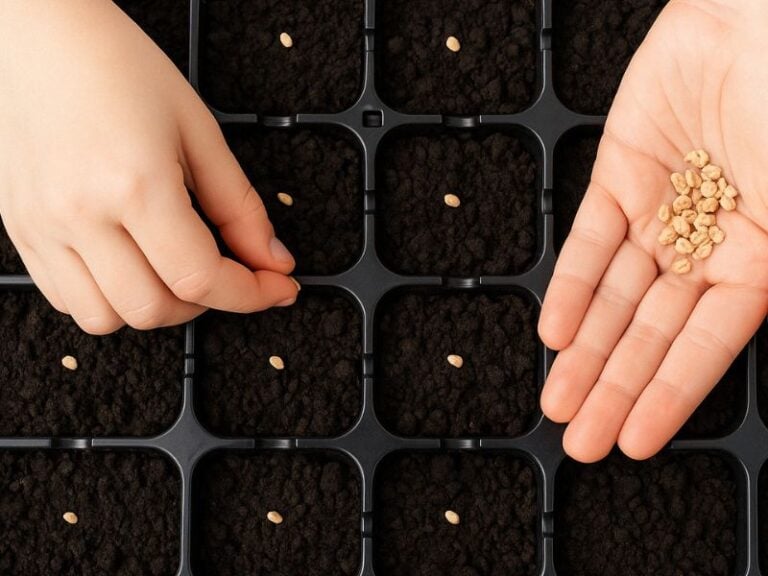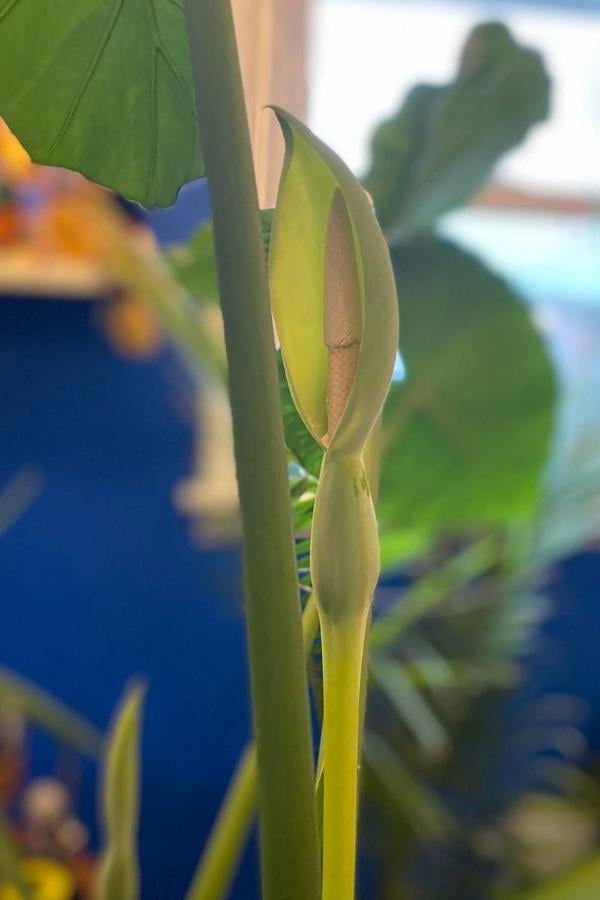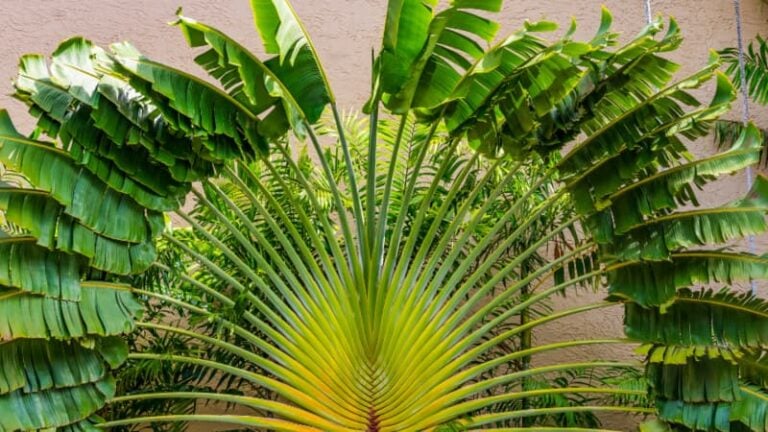I can’t get enough bright spring flowers, particularly Peonies and Rhododendrons. It can be challenging to decide which one to plant!
Both have a distinct charm that makes them welcome additions to my garden. How will we know where to grow each of these magnificent specimens?
Peonies are compact shrubs with large, fragrant flowers that grow in clusters. It dies back each winter but quickly regrows in the spring. Rhododendrons grow as large shrubs or trees visible all year, with clusters of simple flowers that lack perfume. Instead, they prefer filtered light and thrive when planted beneath the soaring branches of taller trees.

Contents
Rhododendron is “Tree” and Peony is “Grass”
Rhododendron is a genus of evergreen flowering trees in the family Ericaceae. On the other hand, Peony is a perennial herb in the Paeoniaceae family that belongs to the genus Peonies. Therefore, rhododendrons are classified as trees, while peonies are classified as grasses.
Rhododendron is an evergreen flowering tree, so its green leaves remain even in the winter. However, since the Peony is a perennial plant, its leaves and stems on the ground die and disappear in winter, leaving only the roots to overwinter and new shoots to appear in spring.
Rhododendrons are “trees,” so they have thick, brown trunks. (Green branches can be seen close to rhododendron shoots.) A peony is a “grass,” so it has a thin green stem. (The stems of some peonies are a rusty brown color.) When there are no flowers, the stem, and stem color distinguish them.
Sleeping Shrubs vs. Enduring Trees
Peonies and Rhododendrons both prefer warm weather. They thrive in USDA Hardiness Zones 9 to 4, with Peonies being slightly more frost resistant and capable of growing in USDA Hardiness Zone 3.
Peonies are a low-growing plant that forms dense shrubs during their growing season. They must, however, live in a single season because they die in the winter. As a result, they tend to form three or four-foot-tall compact shrubs.
Peonies must be pruned to the ground level when they begin to die back in the fall. However, it appears harsh; the Peony benefits from the frozen winter slumber.
The plant spends the winter as a rhizome or thick, fleshy root that lies dormant beneath the soil. They’ll come back stronger than ever after the frost has passed.
The Rhododendron does not die back and thus grows to be much larger. Gains made during the growing season are not lost and continue to grow larger each year.
They vary in size depending on the cultivar, ranging from three to four feet for dwarf varieties to 15 feet or more for larger types.
Though they approach the year differently, they both live a long time. The annual beauty sleep of the Peony pays off, resulting in a lifespan of at least a century or more.
Some become family heirlooms, passed down through the generations. Rhododendrons are also long-lived, with plants living fifty years old and some individuals living to be a hundred years or more.
Peonies Are More Fragrant
Peonies are famous for their exquisite fragrance. Some produce a delicate, rose-like sweetness, while others have a crisp, fresh perfume with citrus notes, and they all make a lot of it.
There are few pleasures beyond sitting on a Peony-bordered patio in the spring and simply smelling them.
Rhododendrons do not compete. Their flowers have little to no perfume, and their blossoms are appreciated more for their color.
Flower Size And Shape
- Another significant difference between the Peony and the rhododendrons is the color and structure of their blooms.
- Peonies are multilayered, complex flowers that can have up to five different types of buds: single, semi-double, double, Japanese/Anemone, and bomb. They have beautifully intricate blooms that are often so heavy that they must be staked to stay upright. They are available in every color except blue and purple. They bloom almost exclusively in the spring.
- Rhododendrons have a much simpler structure, usually consisting of only one layer of petals. However, they have a more comprehensive range of colors and a longer blooming period. Depending on the cultivar, they may continue to bloom into the early summer.
Light Requirements
Another significant distinction is that Peonies and Rhododendrons prefer different light levels.
Peonies require a lot of bright light. So during the growing season, they get full sun. It makes sense: they have to fuel the growth of a three-foot-tall shrub in a single season, so every scrap of energy counts.
On the other hand, Rhododendrons do not have this pressure and thus prefer a dappled shade. They don’t require as much light and will struggle if planted in an overly sunny location.
It’s common practice to grow them beneath another tree, preferably one with deep roots, such as an oak or a pine.
They provide adequate protection, and as a bonus, each shed leaf falling from above becomes richer mulch as the year progresses.
Bedding Requirements
Peonies and Rhododendrons prefer rich, loamy soils with plenty of mixed organic matter. Before planting, it is often recommended that their beds be heavily amended with compost or well-rotted mulch.
Because their roots are shallow, the mulch protects them from damage while also providing fertilization as it decays, right where it is needed.
Good drainage is also essential. Peonies and Rhododendrons both require well-drained soil and do poorly in wet soil. If their beds become too wet, rhododendrons, in particular, can develop rotten roots.
Their preferred level of acidity, however, is a significant difference. A Rhododendron prefers acidic soil, while a Peony prefers alkaline soil – that is, they have opposite pH types.
Without the proper acidity, the plant’s roots will not be able to draw enough nutrition to thrive. It’s a minor distinction, but it has far-reaching implications. Test the soil (Amazon link) before planting to ensure healthy growth.
Peony and Rhododendron Landscaping
Peonies and Hydrangeas are shallow-rooted plants that work well in various landscaping situations. It may appear challenging to choose between them, but their differences eliminate much of the guesswork.
The two most important factors to consider are light level and soil acidity, as well as how you want your landscape to look throughout the year.
Peonies thrive in free-draining beds that are exposed to the elements. I enjoy planting them near patios, decks, and similar areas to enjoy their blooms’ gorgeous color and distinctive fragrance.
They make an excellent spring feature, calling you back to the garden after a long, cold winter spent indoors.
Rhododendrons, on the other hand, thrive in the shade of tall trees. They add a great splash of color and can fill in gaps under oaks and pines for a denser, more engaging planting.
Then, as the days begin to warm, their bright flowers will shine in the shadows, heralding the arrival of spring.






